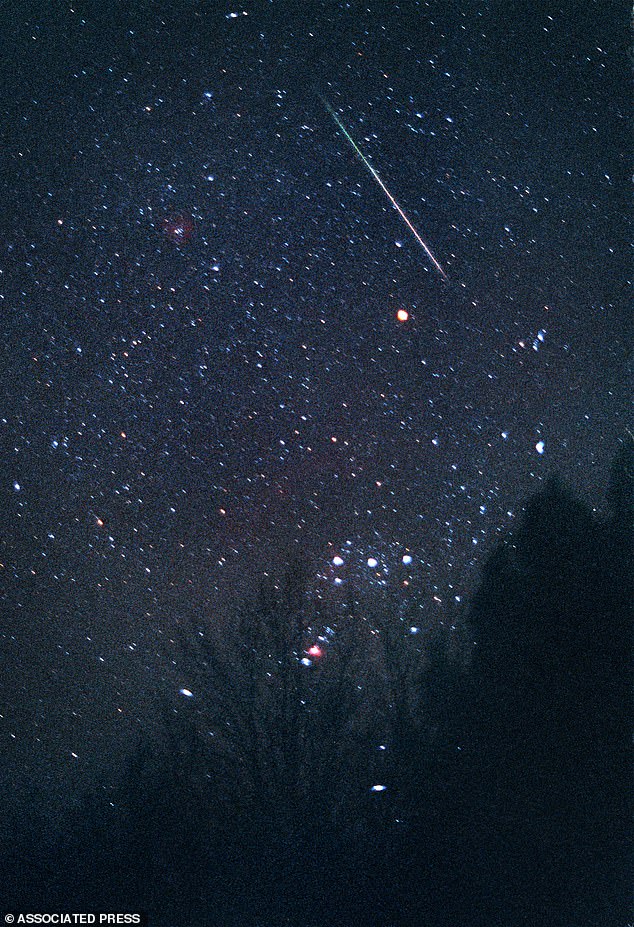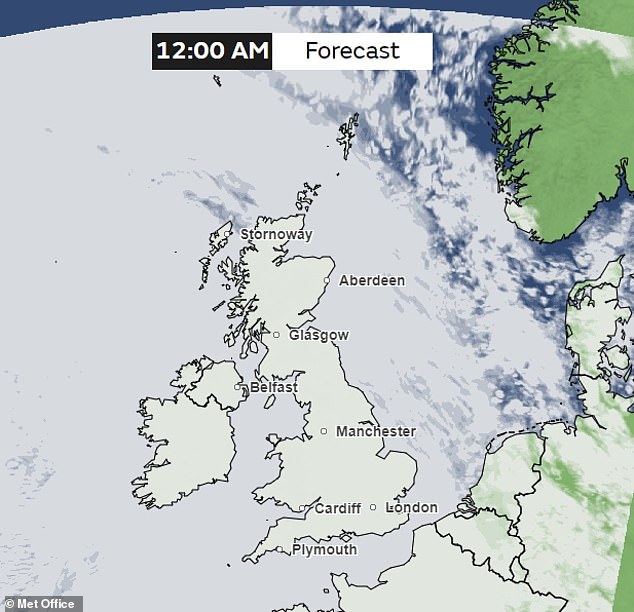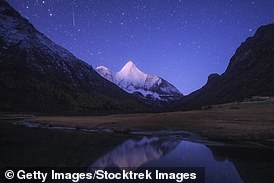The 2023 Leonid Meteor Shower peaks this evening with up to 10 shooting stars every hour – here’s the best time to see it
>
If you’re a fan of stargazing, be sure to keep an eye on the sky tonight.
This is because the Leonid meteor shower will peak between midnight and dawn, providing the perfect opportunity to spot a “fast” and “bright” meteor.
Astronomers say up to 10 meteors could be seen every hour as Earth passes through the tail of Comet Tempel-Tuttle.
The Leonides – which will be active until November 30 – are one of the most prolific meteor showers of the year.
They can be seen with the naked eye if conditions permit, that is, provided that cloud cover, light pollution, or moon glare do not obscure the view.
Look for! The Leonid meteor shower will peak between midnight and dawn tomorrow, providing the perfect opportunity to spot a ‘fast’ and ‘bright’ meteor.

Origin: The Leonids get their name from the constellation Leo, Leo, because meteors appear to emerge from a single point within this group of stars (pictured with a circle)
Sadly for those living in the UK, the former may be a problem.
Forecasts indicate that Britain will be almost completely covered in clouds from midnight, making it difficult to catch a glimpse of Leonid.
However, if there is a break in the cloud, the best place to view meteors will be away from large towns and cities, where light pollution from street lights often spoils the view.
The moon will also not be a problem because our satellite will be a waxing crescent during the peak of the Leonid shower, making viewing conditions “quite favourable,” according to the Royal Greenwich Observatory.
Experts say the meteors will be visible all over the sky, so being in a wide open space where you can scan them all will be a bonus.
“For the best chances of spotting the Leonids, find a dark area of clear sky and allow your eyes to adjust to the darkness for about 20 minutes,” said Anna Gammon-Ross, a planetarium astronomer at the Royal Observatory.
“It may also be advisable to lie down because you may be looking up for a long time!”
Leonid gets its name from the constellation Leo Leo, because meteors appear to emerge from a single point within this group of stars.
The dazzling streaks of light seen by stargazers could actually be caused by particles as small as a grain of sand burning up when they strike the Earth at speeds of up to 156,000 miles per hour (70 kilometers per second).

SCENE: Astronomers say up to 10 meteors could be seen every hour as Earth passes through the tail of Comet Tempel-Tuttle

Meteorology: Sadly for those in the UK, the country will be covered in clouds from midnight, making it difficult to catch a glimpse of Leonid
“The early hours of the morning will be the best time to look for this shower, when Leo is nice and high in the sky,” Gamon Ross added.
If you miss the peak due to weather, don’t worry.
This is because the meteor shower will continue at a slightly reduced rate for several days after the peak, providing a great opportunity to view the show.
Binoculars and a telescope may also help better see the meteor from Comet Tempel-Tuttle, which orbits the sun every 33 years.
Alternatively, you can plan ahead for the Geminids, which will be the last major meteor shower of the year.
The shooting stars from this event can generally be counted on for a spectacular spectacle because they are so bright, fairly fast, and unusual in being multi-colored.
Although Geminids are mainly white, some are yellow and some are green, red and blue, and are created in part due to the presence of trace amounts of minerals such as sodium and calcium.
This year’s Geminid meteor shower will peak on December 14-15.
Although leonides can be seen every year, they are responsible for producing one of the greatest meteor showers in recorded history.
On November 17, 1966, a stunning 40 meteors per second were seen during a 15-minute period, thanks to what is known as a meteor “storm.”
These meteors occur every 33 years (which is how long it takes Comet Tempel-Tuttle to orbit the Sun), creating hundreds or even thousands of meteors.
Such storms generated by Leonid were observed in 1799, 1833, 1866, 1966, and 1999-2001.
The storm of 1833 was particularly spectacular, with an estimated 100,000 meteorites falling per hour.
(Tags for translation)dailymail


